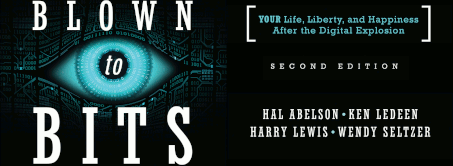Eavesdropping’s OK?
Tuesday, April 29th, 2008 by Ken LedeenYesterday afternoon I was in the offices of one of my large corporate clients Рa financial services company.  I needed to go online to gather some information and enlisted the help of one of their IT staff members to get me access.
The first thing I did was go to check my email.¬† I use Google’s Gmail client when I check mail on the web.¬† I like its user interface.¬† No luck!¬† I entered www.gmail.com and received a giant red warning “You are trying to access a site that is FORBIDDEN!”¬† Interesting.¬† My helpful IT guy said “oh, I forgot to tell you, we monitor every single thing that you do when you’re on the web.¬† We control what you can see, what you can’t see.¬† We read all your email.¬† We’re watching.”
Now, if I’d picked up the phone to make a call I’d have some measure of assurance that no one was listening.¬† Not so in the land of bits. I might just as well have been in China searching for Falun Gong.¬† Little Brother is alive and well.¬† You don’t need to be a government to impose surveillance and thought control.
Now this particular client isn’t a mom and pop operation.¬† The assets they handle exceed the gross domestic product of most nations. So maybe they think of themselves as a government, even a totalitarian one. But even so, I found the notion that they were watching my every move, controlling the websites I could access and hence the information I could receive, reading my email, a bit creepy.
It was one more reminder that technology had moved faster than the laws intended to manage its impact on our lives.  When telephones arrived we put in place legal protections for the privacy of our communications using them.  At some point, we will need to do the same for the bits that carry the substance of our lives.
